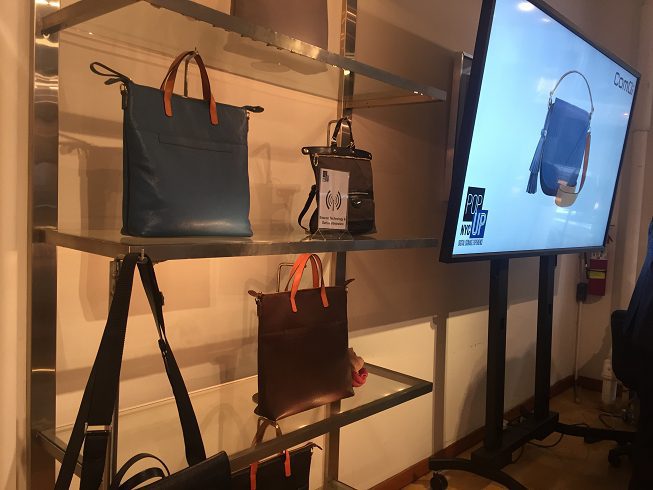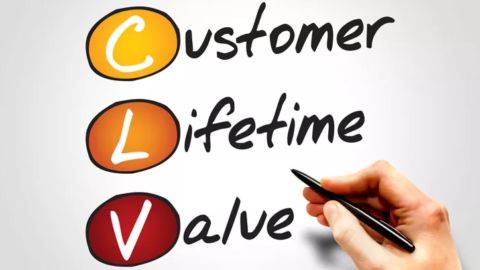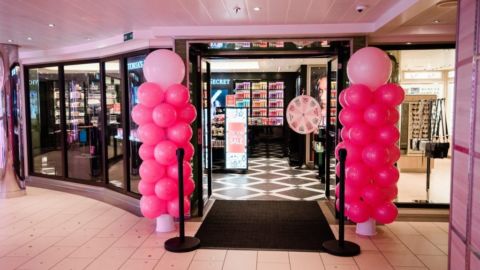 On Nov. 1, I had the opportunity to travel to the Tusk store in New York City to visit the ComQi Pop-Up NYC Digital Signage Experience.
On Nov. 1, I had the opportunity to travel to the Tusk store in New York City to visit the ComQi Pop-Up NYC Digital Signage Experience.
The various technologies integrated throughout the store include beacons, large LED and LCD video walls and touchscreens, shelf edge displays, a visible light communication (VLC) device from LinkRay and RFID “tap and teach.” These are all technologies that companies often display on a trade show floor, but it was a breath of fresh air to see the hardware all working within a few square feet, and in conjunction with actual products — namely leather handbags and wallets.
The VLC device caught my attention the most. It provides shoppers with the benefit of seeing product content and related products after they scan it with the Tusk mobile app. As part of the display, one of the handbags was placed over an LED light storing mobile-friendly content data. When shoppers use their phone to scan the handbag under the light, the app will immediately take them to the product page online, and will give them options of different colors to purchase as well as more information.
Consumers Still Must Buy Into The Mobile App
Obviously, much of the success of any of these devices will hinge on the retailer’s ability to push the mobile app along with these technologies. Many retailers implementing these signage technologies in-store strive to connect them with the online experience in some way, but without an effective mobile app, the experience risks falling flat.
If part of the allure of in-store technologies is to keep customers coming back to the store, then it shouldn’t be a chore for them to download and use the mobile app frequently. One of the biggest hurdles any retailer has faced is that shoppers are in firm control of whether they want to opt in to the integrated experience.
In the case of Tusk, ComQi implemented an SDK into the retailer’s mobile app so that it can integrate every technology platform in the store, without making shoppers jump through hoops such as scanning QR codes.
Human-To-Human Contact Will Always Be A Necessity
Despite the technology that is pervasive throughout the store, the leader of the store tour noted that he was well aware that none of the puzzle pieces would optimize the shopping experience to its fullest extent without a human element involved.
If a shopper is searching for a product online or even has compiled a cart before entering the store, retailers should take advantage of that opportunity by having a kiosk in the front of the store to continue the conversation. This could help increase conversion rates for retailers by alleviating the uncertainty of buying certain products online, and immediately informing store associates about the merchandise a shopper wants.
Regardless of the concerns many analysts may expressed about making retail stores too focused on technology, there’s always value in giving shoppers more immediate information about a product and showcasing more inventory than can be displayed in a single store.
In the right hands, and with the right training, in-store signage technologies, in small doses, would benefit all kinds of retail experiences.













